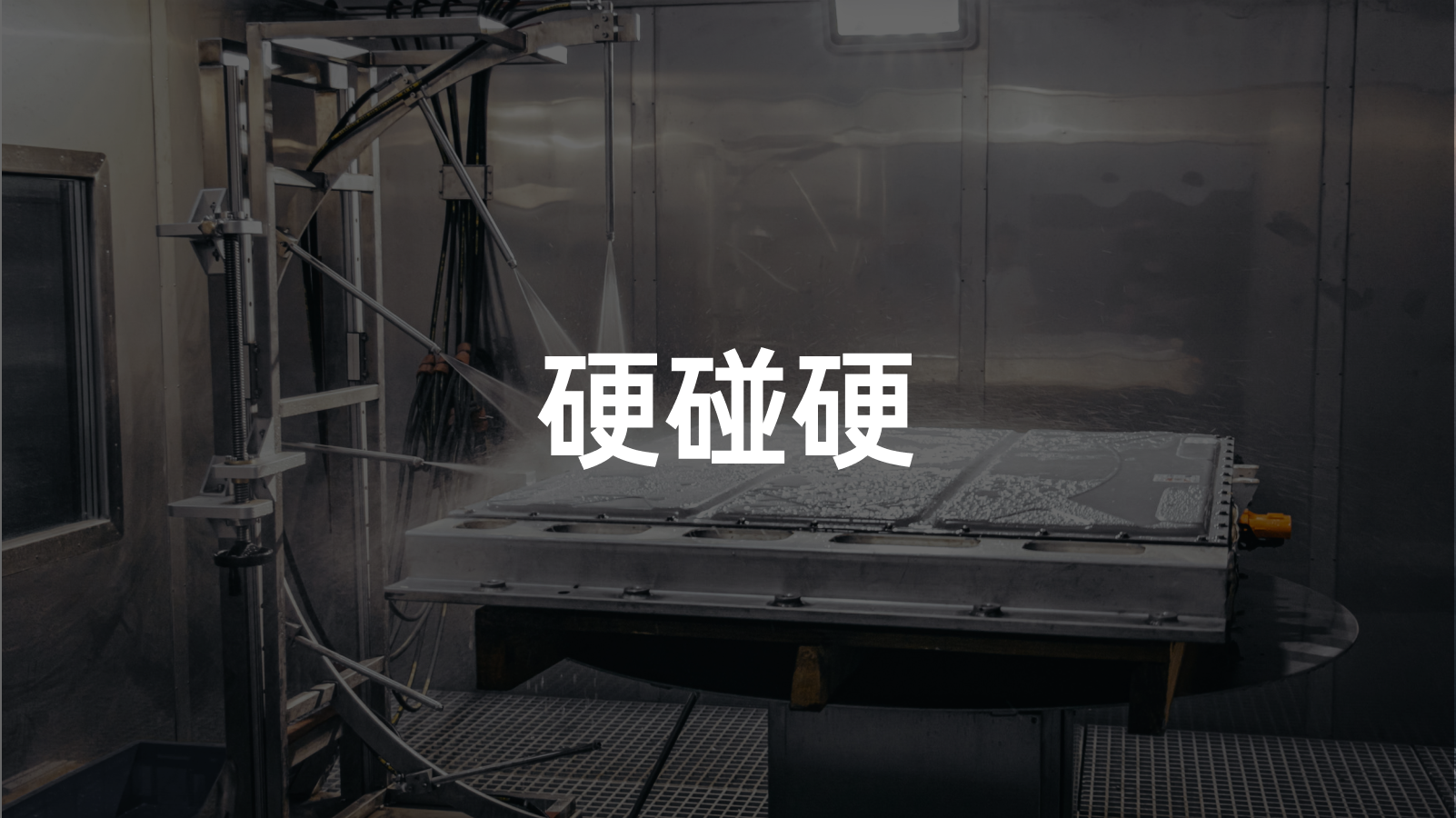When we talk about “car safety”, what comes to mind? Safety airbags; A and B pillar collision intensity; impact energy absorption zone; vehicle structure… But now that we have entered the era of electrification, a new safety standard for “battery safety” has been added to electric vehicles.
In fact, the safety attributes of power batteries have become an important assessment standard for users to decide whether or not to buy an electric vehicle. In a user survey conducted by our Garage 42, 96 out of 195 survey respondents (accounting for 49.4%) believed that the safety of power batteries was a factor significant enough to affect the final purchase decision. In addition, 74 respondents (accounting for 38.1%) believed that although lithium iron phosphate batteries are safer, they still prefer ternary lithium batteries because of their higher performance.
It is evident that when consumers purchase new energy vehicles, the safety attributes of power batteries are a significant consideration in their car-buying decisions. Even though lithium iron phosphate batteries are relatively safer, people still prefer ternary lithium batteries due to their higher battery performance.
Therefore, “how to make batteries safer without sacrificing product performance” has become an issue that LanTu must face and solve.
On September 17th, LanTu Motors, a high-end electric vehicle brand under Dongfeng Group, held a battery safety technology conference at the China Automotive Technology Research Center in Tianjin. At this conference, LanTu showcased several innovative battery safety technologies and allowed us to participate in several battery safety testing experiments on the spot.
How to achieve both performance and safety?
LanTu has its own persistence in choosing the battery. LanTu did not blindly choose lithium iron phosphate batteries for the sake of battery safety, nor did they choose both types of batteries based on different models. Instead, ternary lithium batteries are used throughout the entire model lineup. To ensure the safety of the battery, the battery core, PACK, BMS, and other components all need to perform well.
Compared with lithium iron phosphate batteries, ternary lithium batteries have higher energy density, higher power density, and better low-temperature characteristics, but their chemical activity is higher than that of lithium iron phosphate batteries, which may lead to a slight deviation in safety. Therefore, this requires higher safety protection and heat management for batteries.At the press conference, Dr. Huang Min, director of new energy technology at Voyah Automotive, said, “For Voyah Automotive’s internal priority judgment and R&D, battery safety has veto power. We do not allow any room for discussion on battery safety.” So what has Voyah done for battery safety?
“Amber” and “Mica” battery system
For the Voyah FREE, there are two different versions: a pure electric version and an extended-range version with a 1.5T engine. For these two distinct models, Voyah has developed two different battery systems. The difference lies in the different insulation materials, technologies, and structures that prevent batteries from shorting out on a small scale and then spiraling out of control on a large scale.

The pure electric version of Voyah FREE has the “Amber” battery design. Its construction involves filling the battery pack with a special organic-silicon-compliant material, wrapping each independent battery cell with this material on the outside, thus avoiding the out-of-control spread of one cell to other cells.
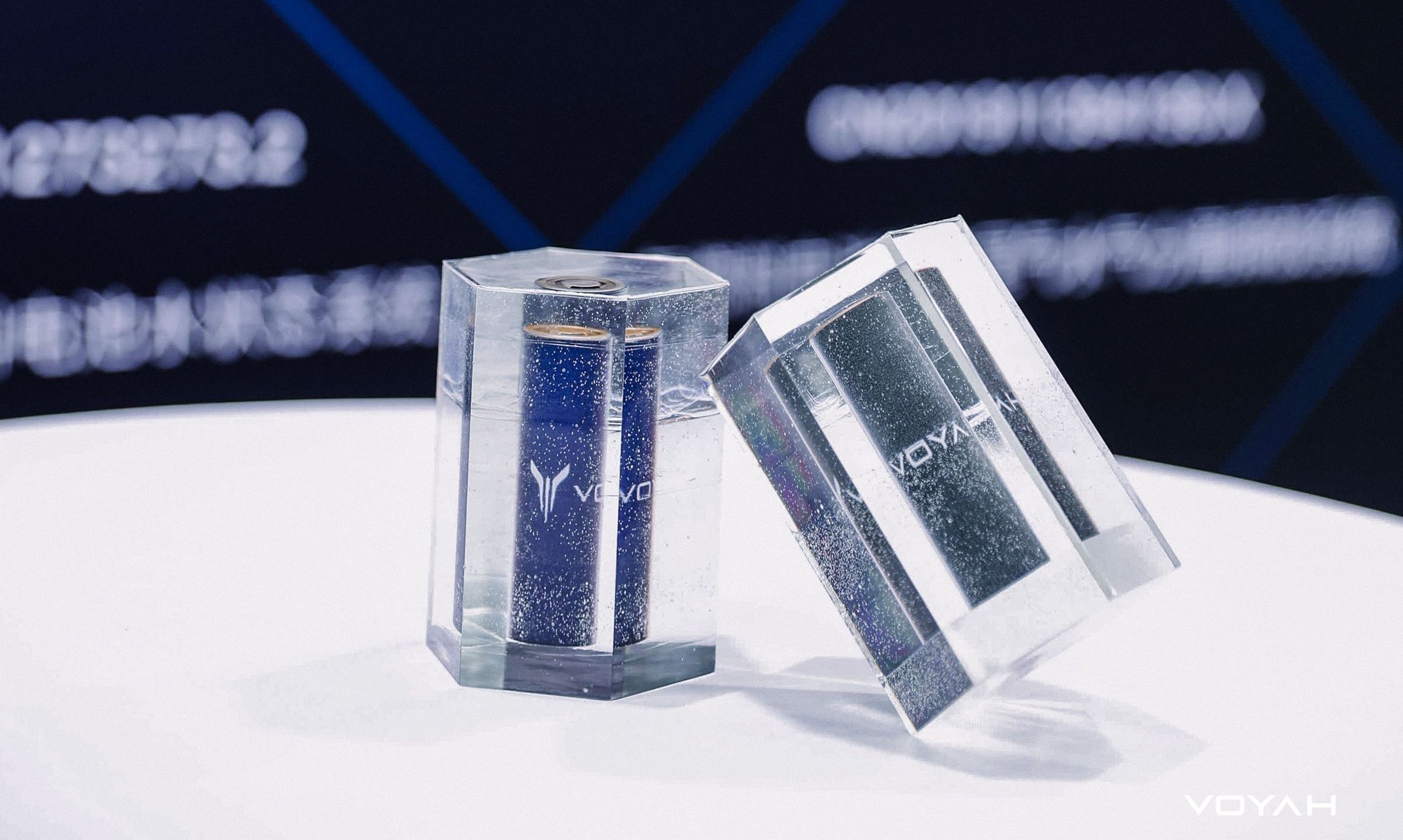
Because the pure electric version of Voyah FREE is equipped with the 21700 cylindrical battery provided by Samsung SDI, each cell is protected from the outside by the external material like “amber,” hence the name “Amber” battery system.
The “Mica” three-dimensional insulation wall technology mounted on the Voyah FREE extended-range version. According to official information, it adds layered Al-Si mica and aerogel inside the battery pack, and battery cells and mica and aerogel stack up like mica rocks. This design is intended for NCM523 battery packs provided by BYD, and its ultimate goal is to control heat propagation and reduce battery out-of-control.
Although the safety measures to protect the battery cells seem to be in place, adding a large amount of insulation material in a limited space for safety purposes may result in the whole battery pack’s low energy density, which may not be advantageous in terms of cruising range compared to models of the same class.
PACK Passive Protection Must be in Place
If the measures adopted to protect battery cells are likened to the last line of defense for driver safety, like airbags, then the protective design of PACK is similar to the body structure of a vehicle in a collision. The more robust the vehicle’s structure, the better the protection for the driver, and the same applies to PACK.Because at present, most of the causes of cell runaway are caused by various external forces. A good PACK can greatly reduce the safety risks of power batteries.
First, the “ironclad” body
To harm the PACK, the body must be moved first. In the event of a collision, because the battery pack is protected inside the vehicle body structure, high-strength body protection is the first line of defense for the PACK.

Since the front and rear of the car have sufficient buffering and energy-absorbing space, the side is usually the direction that poses the greatest threat to the battery system. The B-pillar and door sill of the Voyah FREE model adopt 1,500 Mpa high-strength steel; the front and rear doors are also equipped with a 2,000 MPa hot-formed steel door anti-collision beam.
The high-strength body structure can greatly alleviate the pressure on the PACK. Unless it is a rare collision, the body structure can generally protect the PACK well. But what if you encounter a rare and violent collision? Don’t worry, this PACK itself is not “vegetarian” either.
Second, the PACK is also a “hard man”
The overall strength and design of the entire PACK have also been well designed.
The battery pack housing uses an aluminum alloy frame with multiple reinforcement ribs. According to official data, the entire battery pack can resist up to 20 tons of force in testing, which is equivalent to a light tank and two buses.

The interior of the battery pack is also designed with multiple horizontal and vertical reinforcement beams that match the body structure. Reinforcing the internal strength protects the internal cells from collision damage.
Although the PACK looks tough from the outside in, it’s not a good idea to just rely on brute force when faced with a strong collision. The Voyah pack also comes with pre-designed deformation space, leaving over 30mm of deformation space to protect the battery cells after the battery pack is impacted and deformed.

Third, the battery cells are also doubly protected
Of course, if there is an extreme collision intrusion, and the battery cells have already short-circuited or the pressure has increased, the double insurance of the battery cells can immediately start protection, cut off the short circuit circuit inside the battery, release additional pressure, and ensure that the battery will not instantly lose control. There is enough escape time even under extreme conditions.

And there is cloud-based BMS as an assist
Most of what has been discussed above is passive battery safety, so if you want to manage the entire battery pack well and ensure its active safety, you have to rely on BMS.
However, nowadays most car models adopt “standalone” BMS, while the LanTu electric vehicle uses the latest OTA-enabled on-board BMS technology to develop exclusive remote power battery data analysis and management technology.
This technology can serve millions of vehicles online simultaneously, track the data analysis remotely for early identification of potential battery safety hazards and remind users on time. Calculating the health of the vehicle battery, establishing a battery life prediction model; long-term continuous analysis and calculation of the big data of vehicle battery packs, and constantly optimizing and iterative updating.
Practice what you preach!
All of the above-mentioned technologies were still in the “talk without actions” stage, and to really verify whether these technologies are useful or not, we must witness by conducting experiments.
Crush test
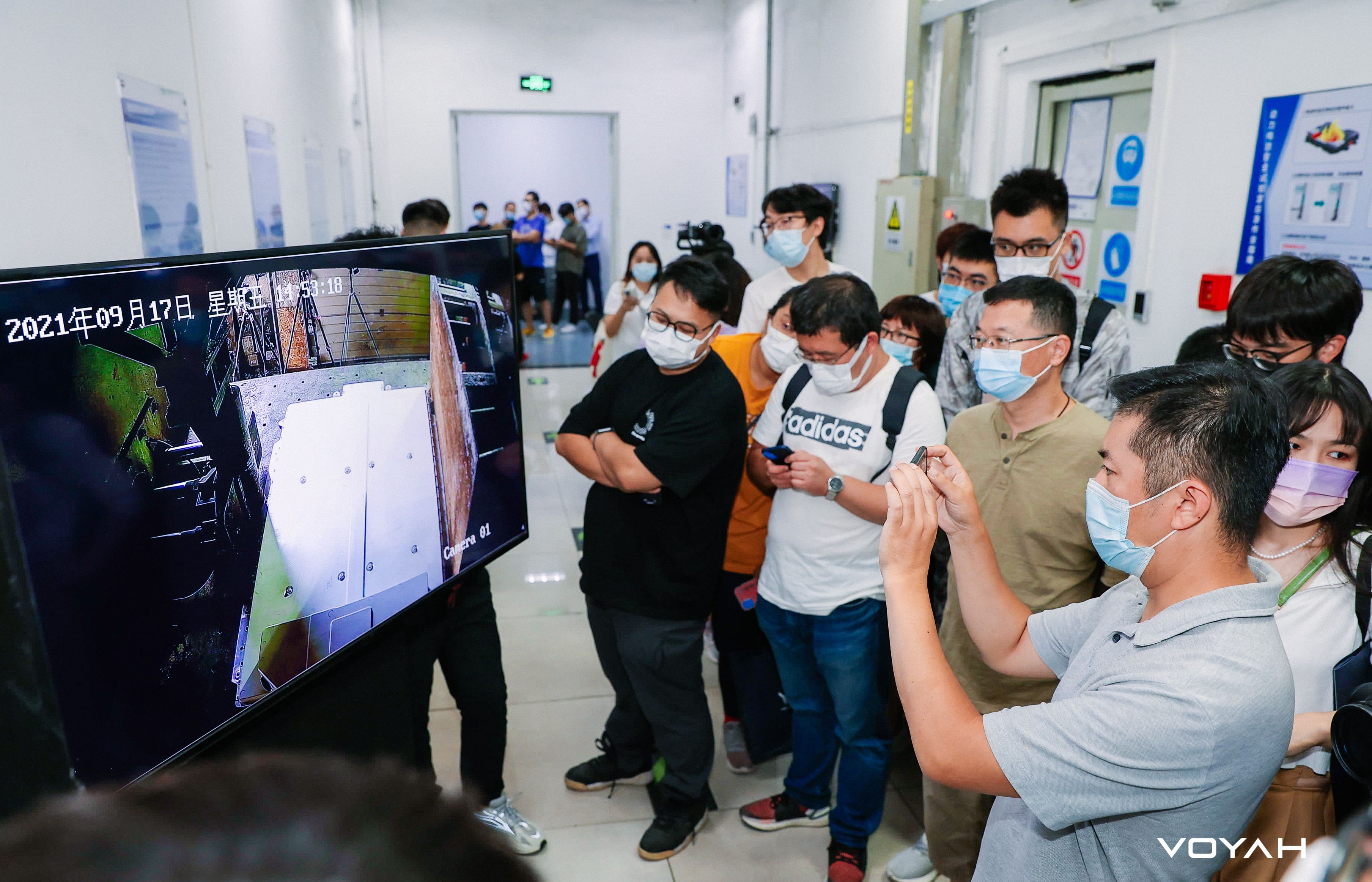
-
Purpose: Simulate whether external force after the entire vehicle collision affects the safety of the battery pack.
-
Testing content: Use a rigid semicircular cylinder with a radius of up to 75mm, apply a force of 200kN (equivalent to the pressure of two buses) to compress the weakest point of the vehicle body protection located between the A and B pillars, which is also the position of the driver, keep it compressed for 10 minutes, and then observe for one hour.
-
Results: No fire and no explosion occurred in the battery pack, and even deformation of the battery pack is hardly visible during external observation.
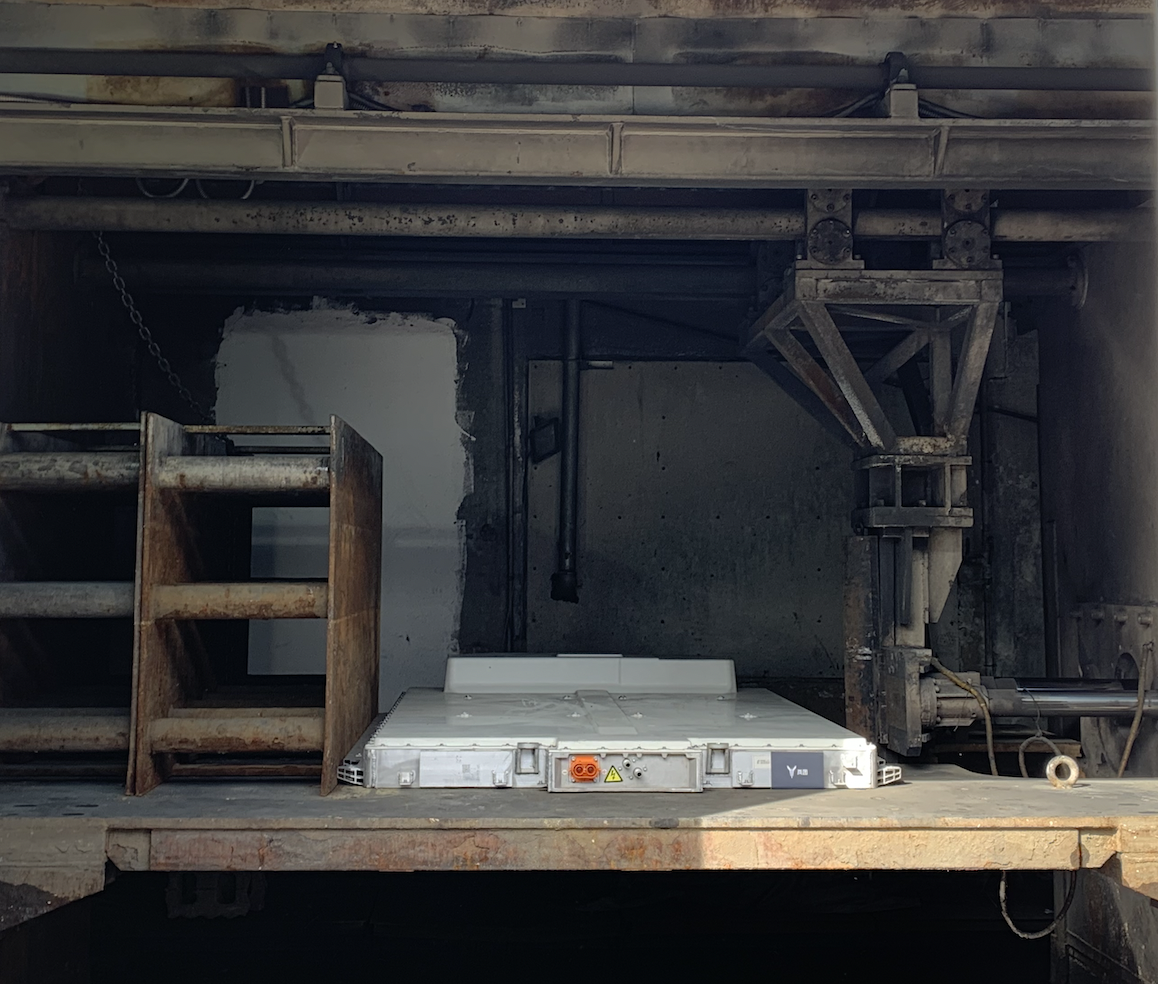
Simulated Collision Test Challenge
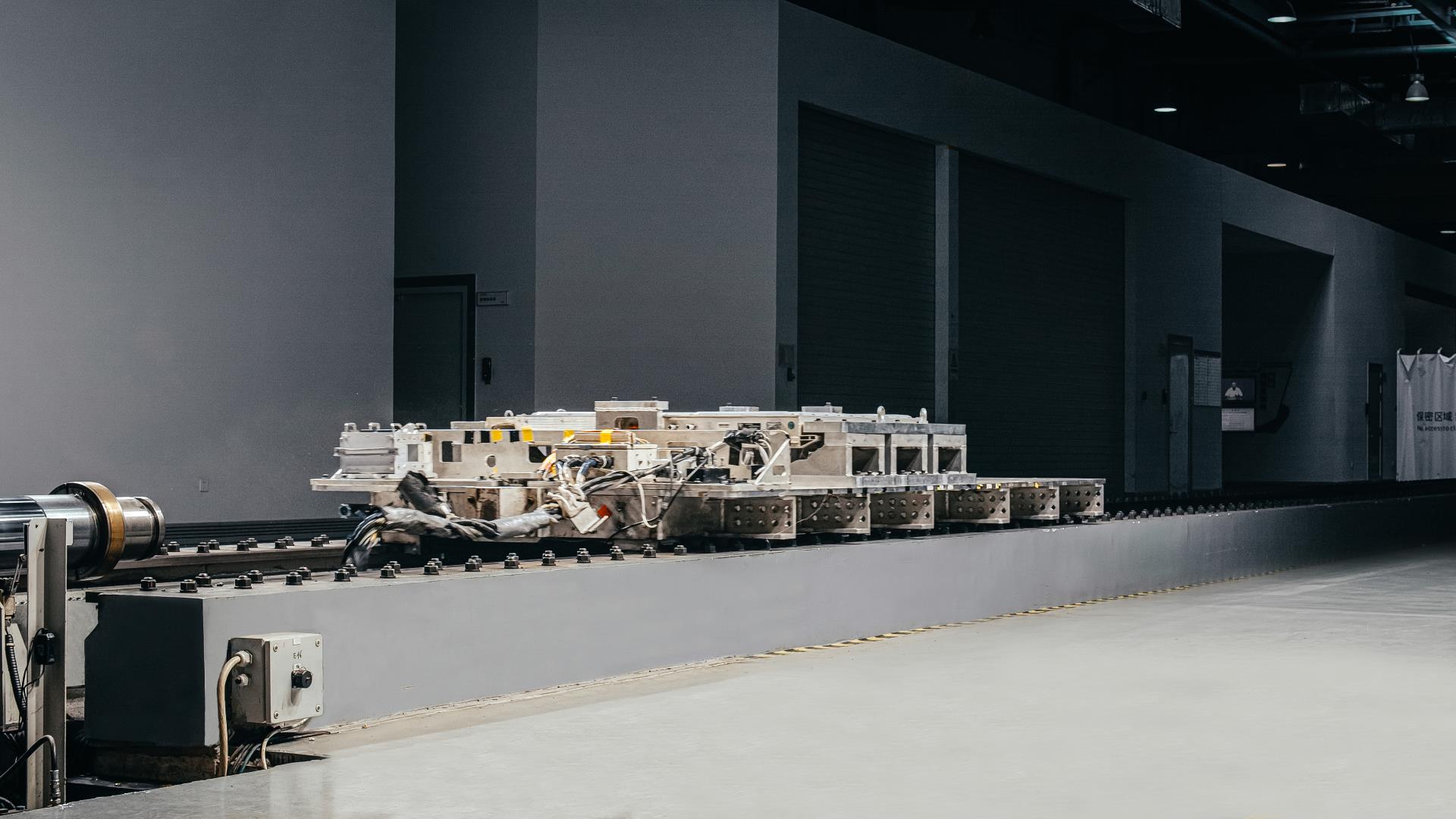 – Objective of the test: To simulate the instant acceleration generated in a severe car collision and test whether the battery cells can withstand the huge G force, and whether the locking nuts of the battery pack will experience strength changes.
– Objective of the test: To simulate the instant acceleration generated in a severe car collision and test whether the battery cells can withstand the huge G force, and whether the locking nuts of the battery pack will experience strength changes.
-
Test procedure: Place the battery pack on a cart, give an instant impact to the cart with an acceleration of 50g/60ms (instant speed can reach up to about 65 km/h), and observe for 2 hours after the impact.
-
Test results: The battery pack had no leaks, shell or explosion, and the insulation resistance was not less than 100 Ω/V. The locking mechanism had no strength changes after several fatigue tests.

(This huge impact really scared me)
IPX9K Test
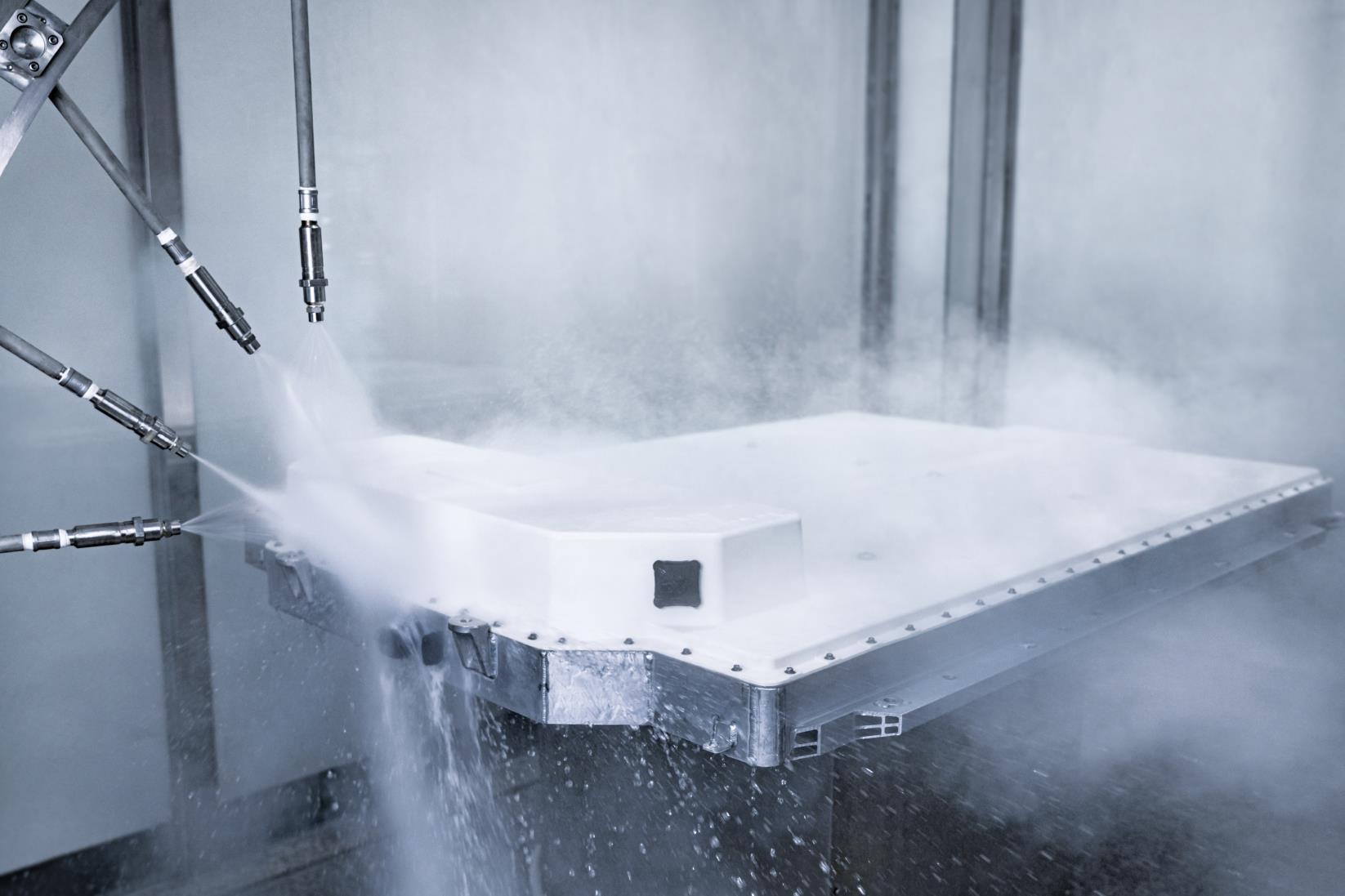
-
Objective of the test: To simulate continuous high-temperature and high-pressure water spraying on the high voltage cable interface of the battery pack to determine whether there will be a short circuit inside the battery pack due to water leakage.
-
Test procedure: Use high-temperature and high-pressure water with a temperature of 75-85℃ and a pressure of 10 MPa (the water pressure in our tap water is generally 0.07 MPa) to impact the connection, interface and various sealing surfaces of the battery pack for 3 minutes, and then dismantle the battery pack to check for internal water ingress.
-
Test results: The battery system did not leak, and there were no fires or explosions in the battery pack. The sealing of the entire vehicle’s battery pack was also good.
Of course, due to the limitations of the scene and time for our on-site visit, Voyah only showed us three test procedures. But all of these tests simulate severe or extreme accidents to test the safety of the battery pack.
The final test procedures are certainly not limited to these. According to official data, the national standard for testing the safety of electric vehicle batteries includes more than 20 major items. Voyah adds more than 60 major items on this basis, and tests the battery pack with 80 major items and 150 minor items that simulate various extreme usage scenarios of users. Also, the battery has undergone more than 1,000 harsh tests for different road conditions, as well as extreme environmental conditions such as -40℃ and 50℃.
Seeing is believing. After witnessing the first test on-site, it can be seen that Voyah’s battery pack passed the test with flying colors. It can be concluded that Voyah’s technology is not just a PPT product but a matured mass-produced product that can withstand on-site testing.
ConclusionAt the end of the press conference, Dr. Huang Min said, “We must both be down-to-earth and look up at the stars.” LanTu also presented us with their development layout for future battery technology.
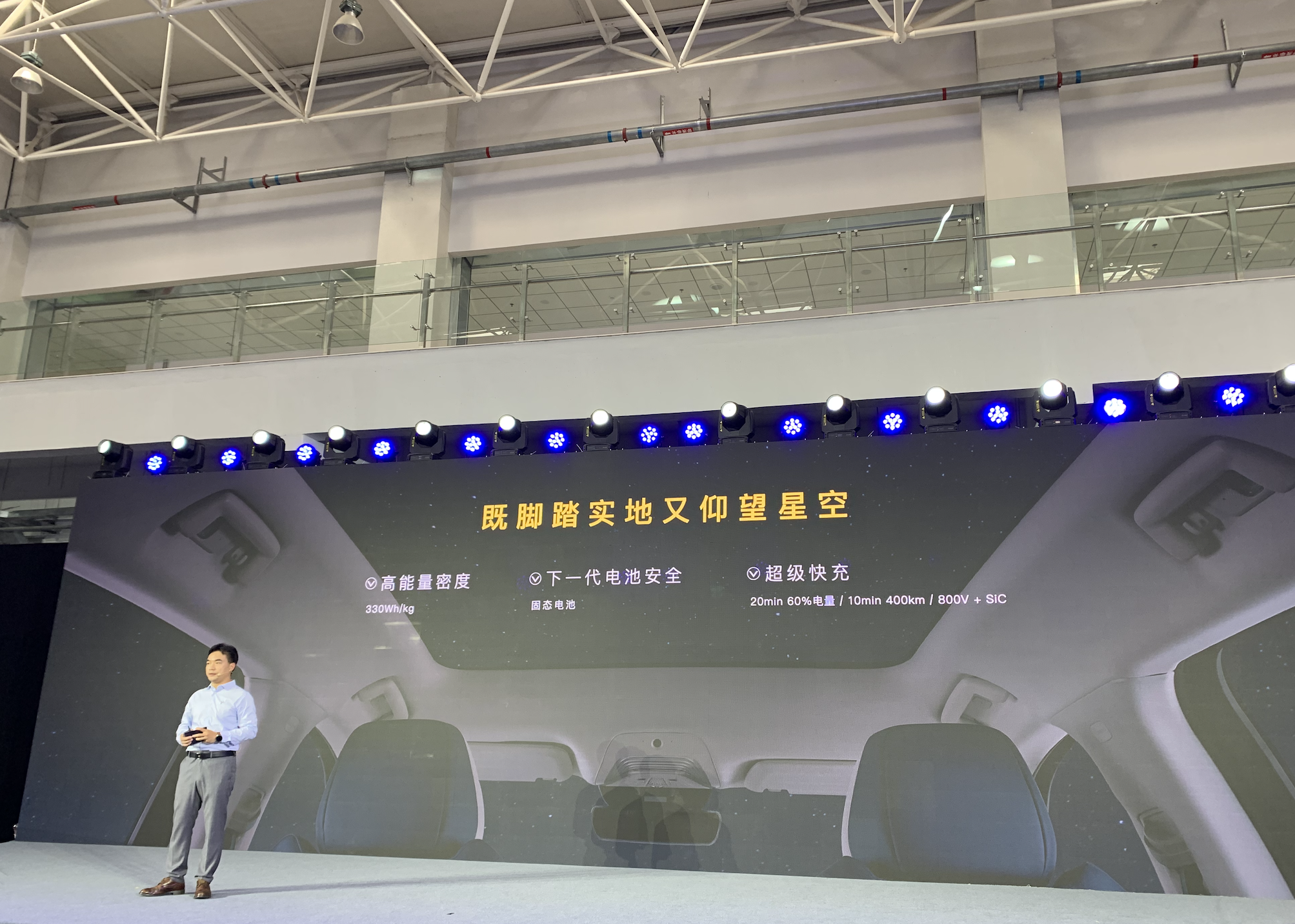
-
Upcoming introduction of high-nickel ternary soft pack batteries: Soon, we will begin mass production of high-nickel ternary soft pack batteries, which achieve complete thermal control, as well as the best energy density and power density in the industry. We also plan to introduce battery technology with energy density of up to 330 Wh/kg.
-
Next generation battery technology: LanTu’s layout for next generation battery safety technology has already begun, and solid-state batteries have been included in the schedule for commercial development.
-
High-power fast charging technology: LanTu’s self-developed high-power fast charging technology will soon be mass produced, with the capability to charge 60% capacity in 20 minutes. The second-generation super-fast charging technology, based on the whole car’s 800 V and SiC technology, is also being researched, with charging time further reduced to 10 minutes, and a goal of achieving 400 km of driving range with a 10-minute charge.
LanTu has 52 years of car-making experience from Dongfeng Motor Corporation, coupled with their CEO, Dr. Lu Fang, also serving as the brand’s CTO. LanTu has a certain pursuit of technological innovation, and their vision for the future is quite surprising. However, for now, LanTu is still focusing more on what ordinary consumers care about most: performance and safety.
LanTu did not blindly pursue the use of lithium iron phosphate batteries for battery safety, but instead spent a lot of resources studying how to make ternary lithium batteries safer, with more technology and protective measures to reduce the safety risks of ternary lithium batteries. In terms of actual performance, the battery pack that LanTu presented this time used experimental data to show us that safety and performance can indeed be achieved simultaneously.
In this era where battery safety is of utmost concern, having the courage to showcase innovation and efforts in battery safety to the public demonstrates that LanTu has confidence in their own technology. In the Three Kingdoms period, Zhuge Liang “borrowed the eastern wind” and burned down the Cao army’s ships, bringing a great victory to the Kingdom of Wu and Shu. However, in the current electric vehicle field, we do not need these uncontrollable sources of fire. LanTu and the current Dongfeng give us “peaceful years” in our travels.
This article is a translation by ChatGPT of a Chinese report from 42HOW. If you have any questions about it, please email bd@42how.com.
